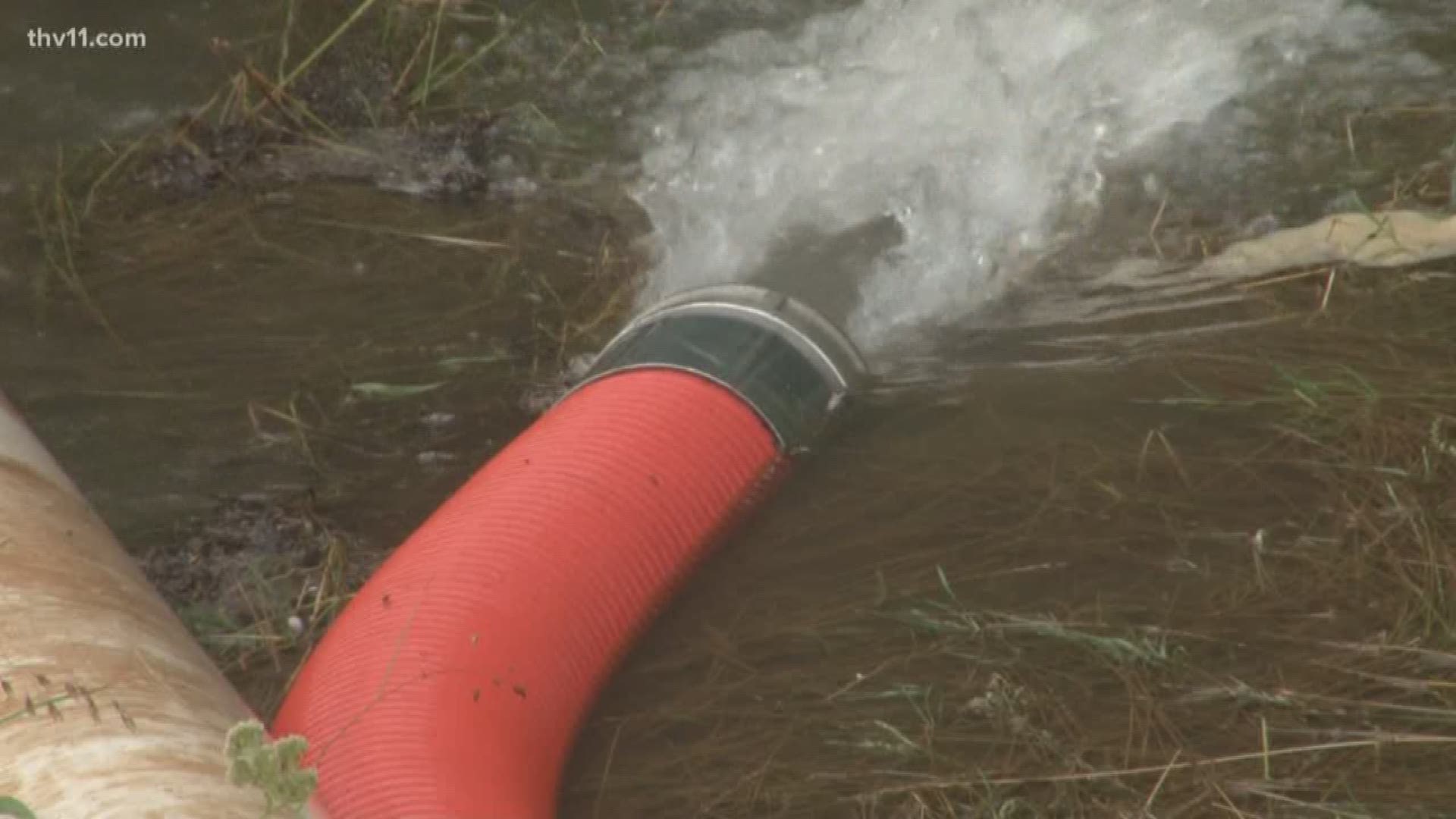The Arkansas River is beginning its slow, steady fall, so now lots of people are watching to see how much water falls from the sky this weekend, and whether central Arkansas can handle it.
The answer may depend upon which segment of Little Rock’s drainage system you consider.
“What we’re having is, we’re having an issue of not only rain event, but then also the level of the Arkansas River,” Greg Ramon explained during a light rain shower Wednesday afternoon, “and both of those two have an impact on our operation. So, right now, we’re more concerned about the Arkansas River, but as you can see, with the rain coming down, this might change, and it might add to our dilemma.”
Ramon is the CEO of the Little Rock Wastewater Reclamation Authority, the city agency responsible for sewer service. He showed off a pair of large, orange pumps at the agency’s main treatment plant near Clinton National Airport, with pipes running over a nearby levee.
“We have three treatment plants, and we can divert some flow to the other facilities. Our hope is that these do not have to be turned on,” he said, “and all they are for us is an insurance policy. But, if they do need to be turned on, we will be able to meet our regulatory needs by having these discharge.”
Ramon said the flood level was only a foot away from interfering with the plant’s natural discharge process, necessitating the pumps. He said LRWRA has used those pumps during various construction projects, but never because of flooding.
“The treatment plant,” he explained, “by gravity, flows the clean water out into the Arkansas River. The higher the river is, the more resistant it is to flow by gravity, which means it starts to back up to the system.”
Ramon said the system is strained because of all the water in the earth around Little Rock. The main plant normally treats 25 million gallons of wastewater per day, but he said it is currently processing twice that amount.
Even so, Ramon claimed the system is still working well. That includes a pump station in near Pinnacle Valley Road in West Little Rock that is surrounded by water.
Entergy shut off the transformer that powers it because of flooding, so LRWRA crews are frequently boating in with diesel to fuel a generator and keep the pump station running.
“It’s a challenge,” Roman said. “We want to make sure we continue to do it, but we’re making it happen.”
The stormwater system, maintained by the city’s Public Works department, is overwhelmed in several neighborhoods. A police checkpoint was established on Richland Drive Tuesday afternoon, and neighbors said that the water covering their streets came up through flooded drains.
Meteorologists expect a couple of inches of rain could fall during storms Friday and Saturday, putting pressure on storm drains that, in some cases, are already full.
In an emailed statement, Jon Honeywell, Director of Public Works said, “areas adjacent to/at the same elevation as the river could experience flooding if a rain storm of the right intensity occurs in their location. The variation of impacts will depend on the level of the river and how much rain occurs. I cannot say with any certainty what may happen at a particular location. There could be street flooding, yards flooding or even water reaching buildings. If flooding occurs in these areas there is little that the city can do except for emergency services assisting in leaving a home or building.”
Ramon said he was so worried about flooded roads that he asked approximately 10 employees to sleep at the treatment plants this week, so they are never unattended.
“And until we feel comfortable that our folks can come to work without being concerned about flooded roadways, we need to have them here,” he explained, noting that the same plan had been used during winter storms. “And they’re here and we purchased them food and so forth, so that they can survive.
“This is only one component of making sure that we get through this event, but, there are people working throughout the city to ensure that everything else works the way it needs to, not only the treatment plant.”
Ramon added that, despite rainwater seeping into the system through old pipes, the water LRWRA sends back into the Arkansas River continues to meet state and federal purity standards.

